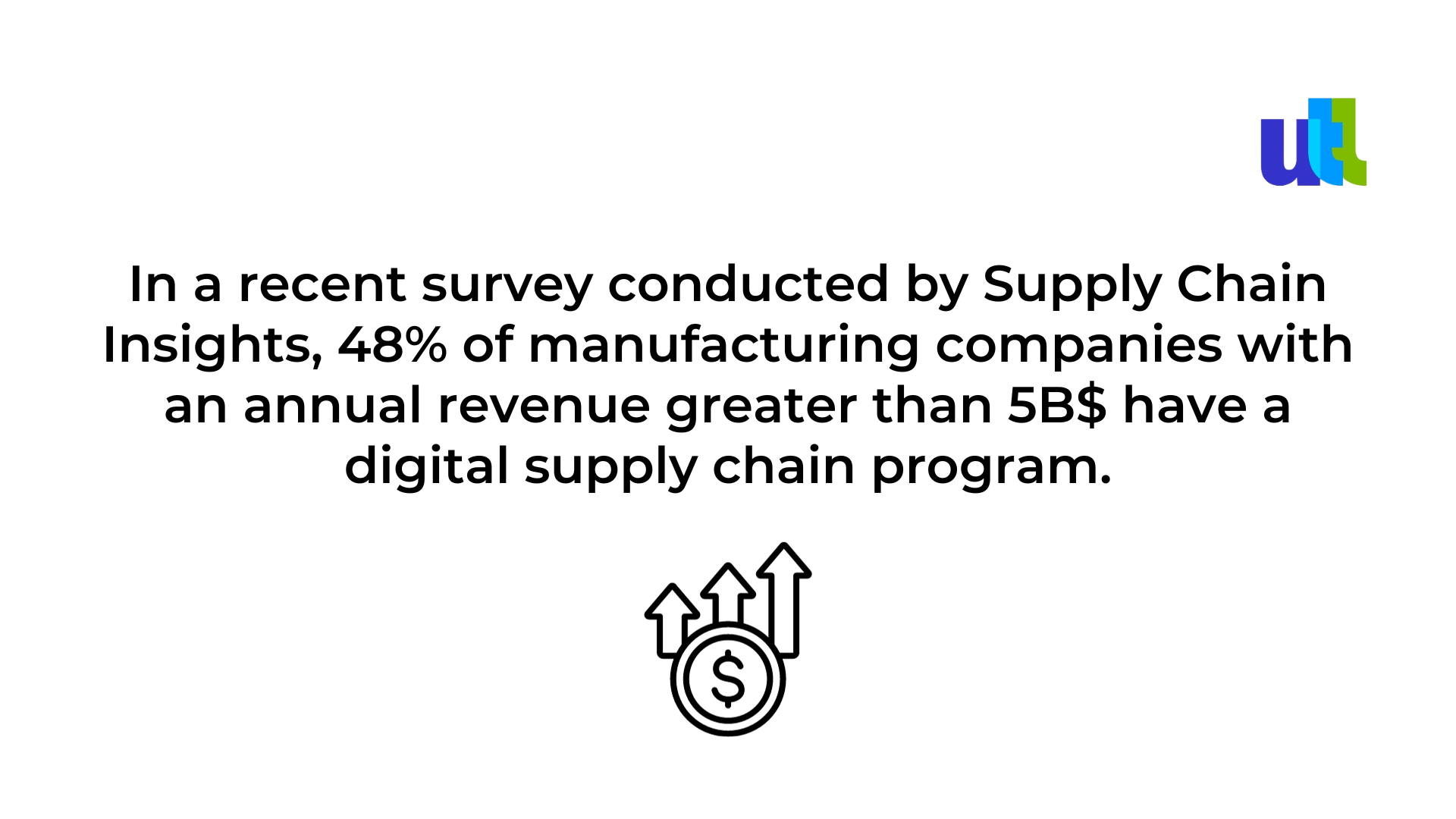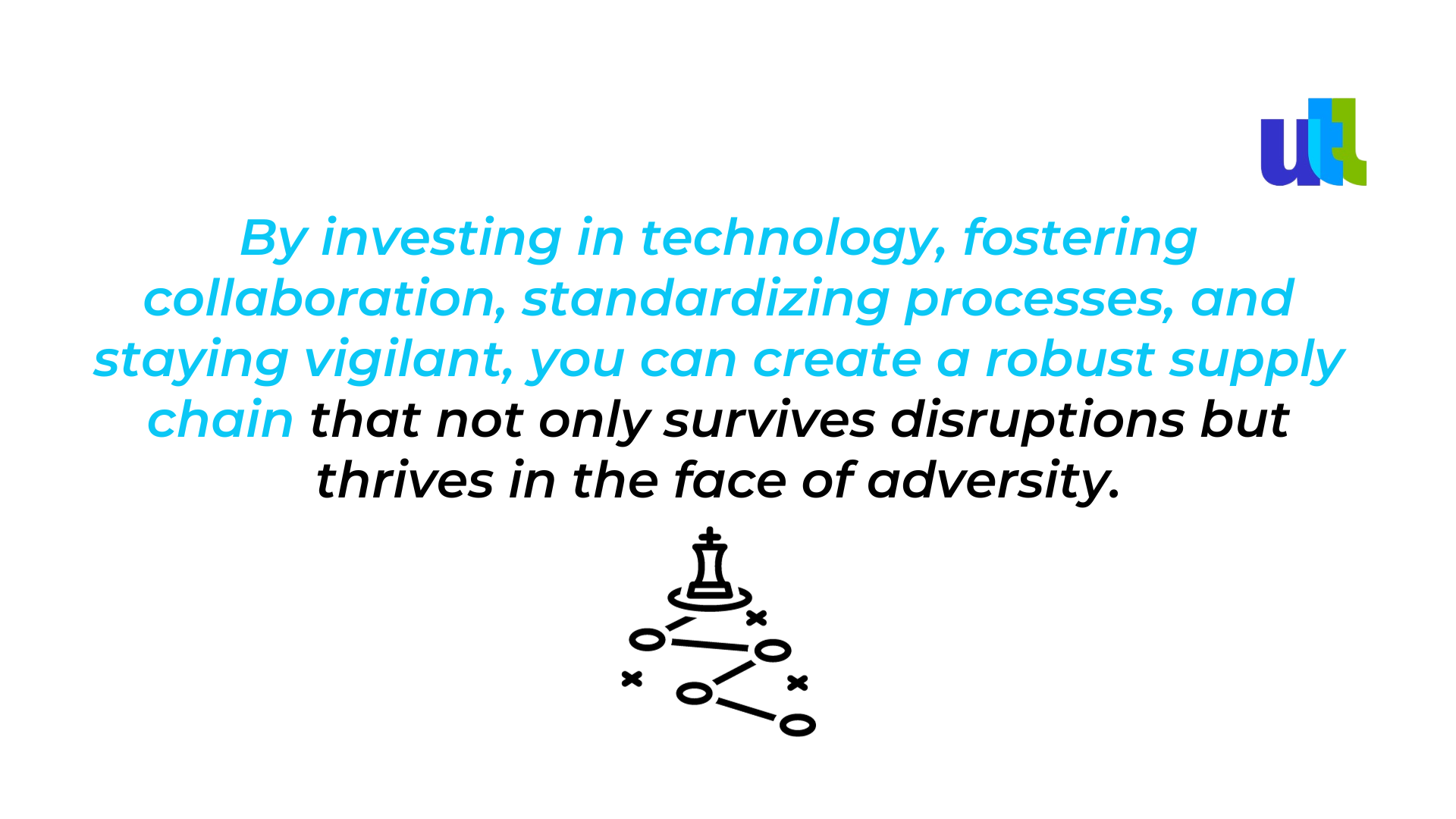In the fast-paced and ever-evolving landscape of modern commerce, the one key strategy that has emerged as a game-changer in recent years is supply chain visibility. This concept goes beyond merely tracking goods from point A to point B; it's about harnessing the power of data and technology to optimize operations, reduce risks, and enhance customer satisfaction. In this article, we'll explore the profound impact of supply chain visibility on businesses.
Embracing the need for change
With unprecedented variability and economic uncertainty, the focus of supply chain leaders is, of course, financial viability.

It sounds like progress could finally happen to improve visibility. Right? Unfortunately, the answer is not so fast: most leaders are unclear on what digital means today and mistakenly focus on improving supply chain visibility using traditional approaches.
The power of supply chain visibility for businesses
At its core, supply chain visibility is the ability to monitor and track every step of the supply chain in real-time. This means having access to data regarding the movement of raw materials, components, and finished products as they flow from suppliers to manufacturers, and then to distributors and customers. This visibility extends not only to physical logistics but also to all the financial transactions, various inventory levels, and production schedules.
Modern supply chain visibility is made possible through a combination of technology tools and platforms. These include:
IoT (Internet of Things) -sensors and devices can track the location and condition of goods in transit, providing real-time data.
Big Data Analytics - advanced analytics tools can process vast amounts of data to provide insights into supply chain performance.
Blockchain - this technology enhances transparency and security in supply chain transactions.
Cloud-Based Platforms - cloud solutions enable businesses to store and access data from anywhere, facilitating collaboration and information sharing among supply chain partners. And more.
The hidden costs of a lack of visibility
It's essential to first understand the consequences of its absence. When businesses lack visibility into their supply chains, they are vulnerable to a range of challenges, including:
- Inefficient operations
Without real-time information, businesses often struggle to optimize their processes. They may overstock inventory, leading to excess storage costs, or understock, resulting in stockouts and lost sales opportunities.
- Increased risks
A lack of visibility makes it difficult to identify and mitigate potential disruptions. Natural disasters, political instability, and unexpected supplier issues can cause errors in supply chains that lack visibility.
- Customer expectations
It is no secret that in today's world, customers expect transparency and speed. When businesses can't provide accurate delivery estimates or respond quickly to inquiries, customer satisfaction dwindles.
- Missed opportunities
Opportunities for process improvement, cost reduction, and product innovation often remain hidden without proper access to data and insights.
Furthermore, it is not less important to enable the flow of Information across the team.
The management of data in supply chain visibility should meet the needs of multiple roles across the organization. The supply chain is increasingly dependent on network flows (movement of goods and services through multiple nodes, communication channels, and trading partners). However, in most organizations, management teams have anything but a real team to work with and rely on. Supply chain should be a team sport. Otherwise, the disparate requirements and shadow IT investments become a problem.

Actionable strategies to enhance supply chain visibility
So, how to reap the numerous benefits the technology offers? Here are some ideas:
1. Investing in advanced technology
The foundation of supply chain visibility lies in technology. Consider implementing the following technologies to gain real-time insights: IoT Sensors,
Cloud-based solutions, and big data analytics.
2. Collaborate with supply chain partners
Visibility shouldn't stop at your organization's doorstep. In fact, it only starts there. Collaborate with suppliers, manufacturers, logistics providers, and customers to create a network of shared information. By working together, you can enhance transparency and respond more effectively to potential disruptions.
3. Standardize data and processes
Inconsistent data formats and processes can hinder visibility. Establishing standardized data formats and supply chain processes across your network can ensure seamless information flow. Furthermore, this single action simplifies data integration and reduces errors.
4. Embrace real-time tracking
Real-time tracking of goods and shipments is at the core of supply chain visibility. Implement tracking solutions that provide instant (!) updates on the status and location of products as they move through the supply chain. This allows for better decision-making and rapid response to issues.
5. Choose predictive analytics
While real-time data is crucial, predictive analytics takes visibility to the next level. By analyzing historical data and current trends, predictive analytics can help you anticipate future supply chain disruptions and take proactive measures to mitigate them.
6. Monitor key performance indicators (KPIs)
Identify and track key performance indicators relevant to your supply chain, such as on-time delivery, inventory turnover, and supplier performance. Regularly reviewing KPIs can help you spot areas that need improvement and ensure your supply chain is operating not only smoothly, but efficiently.
7. Enhance security and cybersecurity measures
With increased connectivity comes increased vulnerability to cyber threats. You have probably heard about the increased number of cyber-attacks in the recent years. So, ensure that your supply chain visibility systems are secure from them.
Data breaches and disruptions can be costly and damaging to your reputation.
8. Train your team
Investing in team training and education can make the most of your supply chain visibility tools. Ensure that employees feel confident using the technologies effectively and interpret the data they provide.
9. Continuously improve
Supply chain visibility is an ongoing journey, not a destination. Regularly assess your systems, processes, and data to identify areas for improvement. Embracing the culture of continuous improvement is one of the key actions to stay ahead of the competition.
10. Align with business goals
Remember that supply chain visibility is a means. Ensure that your efforts align with your business goals, whether that's reducing costs, improving customer service, or entering new markets. Many business owners try to implement everything they see and hear about – and get lost. Tailor your visibility strategies to support your main business objectives.

At Utah Tech Labs, we believe proper supply chain visibility is the compass that guides businesses to success. And our job is to insure them against mistakes on the way there.
For free consultation on supply chain visibility, click here.
----------------------------------------------------------------------------------------------
View the full presentation:
WRITTEN BY
Sofia Kutko
2023-10-13


































































































































































































